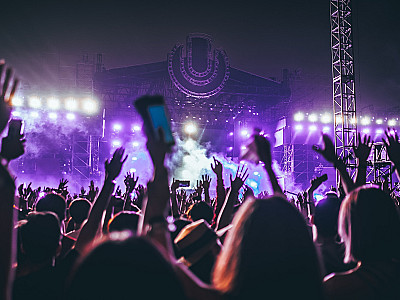Largest Forest Area #8: Indonesia is Still Struggling to Meet Global Carbon Credits’ Needs
Learn Indonesia's Efforts and Struggles to Fulfill Global Carbon Credits Demand



Indonesia is home to some of the most exciting and vibrant music festivals in the world. From the annual Java Jazz Festival to the Bali Spirit Festival, there is something for everyone.
The country’s diverse culture, rich musical heritage, and dynamic demographics make it an ideal location for music festivals.
Here are some questions, though. How profitable are music festivals in Indonesia, and are there any viable measures to raise the potential profit?
We can encounter live music performances at both concerts and music festivals. The two occasions, nevertheless, differ in a few major aspects.
A festival typically lasts at least one full day, but it may even be held for several days or even weeks in certain situations.
In contrast, concerts are typically shorter events that rarely run longer than a few hours each day. Festivals also involve numerous performers playing on multiple stages, while concerts focus on a single band or artist.
Another difference lies in their location or venue. While festivals frequently take place outside in wide public areas like parks or fields, concerts are typically hosted indoors in venues like stadiums or theaters.
For instance, during her solo concert in February 2023, Indonesian artist Raisa performed 26 songs over about 2.5 hours.
The Gelora Bung Karno (GBK) Main Stadium was packed with around 30,000 fans who had purchased tickets ranging from IDR 175,000 and IDR2,000,000 to see the performance she gave.
The Pasar Musik Festival, on the other hand, featured more than 100 performers on eight stages for three days at the Gambir Expo in Kemayoran during the same month. The cost of a single day's entry was set at IDR 328,000 or IDR 754,000 for a three-day pass.
It’s easy to calculate the profit promoters and artists can get over a single concert, but how does generating profit work in music festivals?
Things are certainly a bit more complicated.
The average profit a music festival can get varies. Influential factors include ticket prices, number of visitors, and production costs incurred. Generally, music festivals can generate profit margins ranging from 5% to 25%, depending on the size of the festival being held and its level of popularity.
The festival's production costs, in particular, can make or break the profit. These costs encompass things like worker paychecks, equipment rentals, and artist fees. While big-name artists invite more audiences, the organizer also has to spend more money on paying the artists.
There are a few guidelines that event organizers can use to boost their profit margin:
Working with sponsors can help cover some of the costs of producing a music festival. Many companies are willing to sponsor music festivals for the opportunity to advertise and increase their brand awareness among the audiences.
For example, as their brand awareness and marketing strategy, PT Asuransi Kredit Indonesia (Askrindo) sponsored this year’s Java Jazz Festival for the third time.
Apart from providing personal accident protection to Java Jazz Festival ticket holders, as a sponsor, Askrindo also gets several other marketing benefits, from being able to hold on-site games outlets, photo booths, and even featured on podcasts to talk about their insurance programs during the festival.
Diversifying revenue streams by monetizing merchandise sales, offering VIP packages, and hosting some on-site activities can add to the revenue streams for music festivals.
The Java Pop Festival, which will be held for the first time at the Gelora Bung Karno Madya Stadium in July, comes with several tiers of tickets and merchandise. From presale, One Day Pass, and 2-Days Pass, the music festival can generate income starting from IDR 150,000 to IDR 450,000 per ticket, not including Concert Kit sales.
Partnering with food and drink vendors is also a wise choice as you can get money from renting out spaces.
In addition, there are some music festival goers who come for the food and not the performance. After all, according to a study by Statista, food and beverage purchases accounted for 24% of the total expenses of music festival attendees in 2018. Hence, a big variety of F&B vendors can also help you attract more visitors.
To increase the level of attendance, event organizers need to consider the accessibility of the location, infrastructure, and demographics of the surrounding community.
There's no point in inviting famous artists when the event is being held in a remote location or one that doesn't have proper infrastructure.
Therefore, setting a specific target audience and an appropriate marketing strategy is very important.
For example, since 2018, the Java Jazz Festival has begun to target more young audiences. 60% of the Java Jazz Festival's audience are young people, with 45% of that figure being under 25 years old.
To attract more players, the promoter of the Java Jazz Festival also changed the way musicians are curated.
This year, 40 percent of the lineup for this jazz music festival are young performers. In addition, existing sponsors, like Askrindo with its Digiask insurance app and Accor with its lifestyle loyalty program, also display products that are more in line with the target audience.
Saving expenses can always be the main way to increase profits. Here are some of the biggest expenses when hosting a music festival:
In order to negotiate cost and cut down expenses, some music festivals often offer discounted or free tickets to security personnels, venue’s owner, sound equipment vendors, or journalists. It’s also possible to oblige vendors to bring their own generators or water supplies.
By doing so, music festivals can minimize their spending and earn more profit. However, it's important to keep in mind that some components of event planning are difficult to minimize.
The Berdendang Bergoyang Festival had to be suspended last year because the number of attendees was beyond the police-allowed capacity.
The number of attendees at this music festival exceeded 20,000 as opposed to the authorized 3,000. As a result, dozens of attendees passed out during the event, which led to chaos.
It doesn't imply that music festivals should limit the number of visitors to prevent disarray.
Simply said, thorough planning must be performed before a music festival takes place, starting from the selection of the artist lineups, venue setup, ticket category sales, security, and many other aspects.
Music festivals have the potential to contribute significantly to Indonesia's creative economy in the future if they are well-organized. Sandiaga Uno, Indonesia's Minister of Tourism and Creative Economy, believes that jazz music festivals could contribute to Indonesia's goal of creating 4.4 million new jobs by 2024.
In conclusion, music festivals can be a great way to celebrate music, make profits, and give other people a setting to open up new business opportunities.
However, they must be well-organized and planned thoroughly to ensure that everyone has a safe and enjoyable experience.
Need help in navigating through the entertainment industry or other industries in Indonesia? We have over 1000 advisors in various sectors, including Entertainment, Fashion and Beauty, F&B, and many others who can help you grow and expand your business.
Get in touch with us, or directly register as a client and be connected with our expert network.
We will give you updates of our latest news
Learn Indonesia's Efforts and Struggles to Fulfill Global Carbon Credits Demand

When the COVID-19 pandemic hit the nation, domestic village tourism has offered an alternative path to recovering Indonesia’s tourism industry.

Get to know more about nickel's major role and uses in our everyday lives.

See must-know facts related to carbon credit and the market in Indonesia
